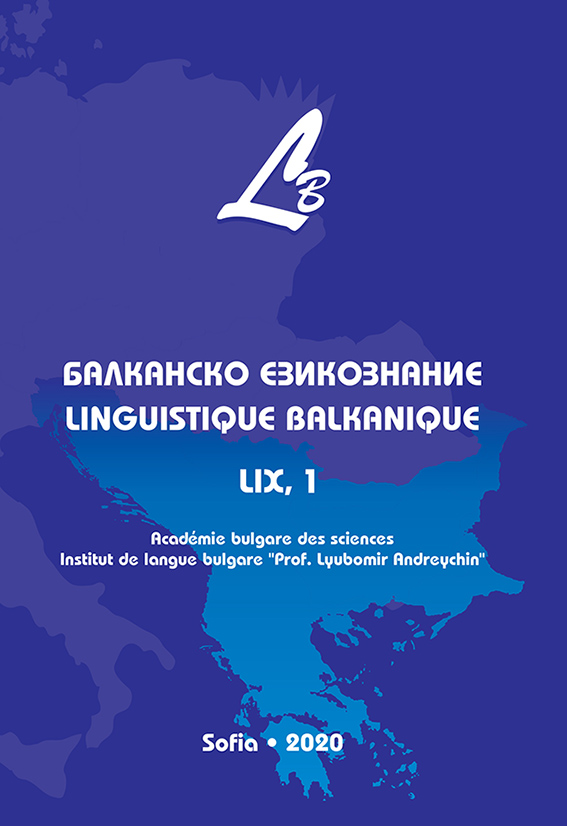
We kindly inform you that, as long as the subject affiliation of our 300.000+ articles is in progress, you might get unsufficient or no results on your third level or second level search. In this case, please broaden your search criteria.

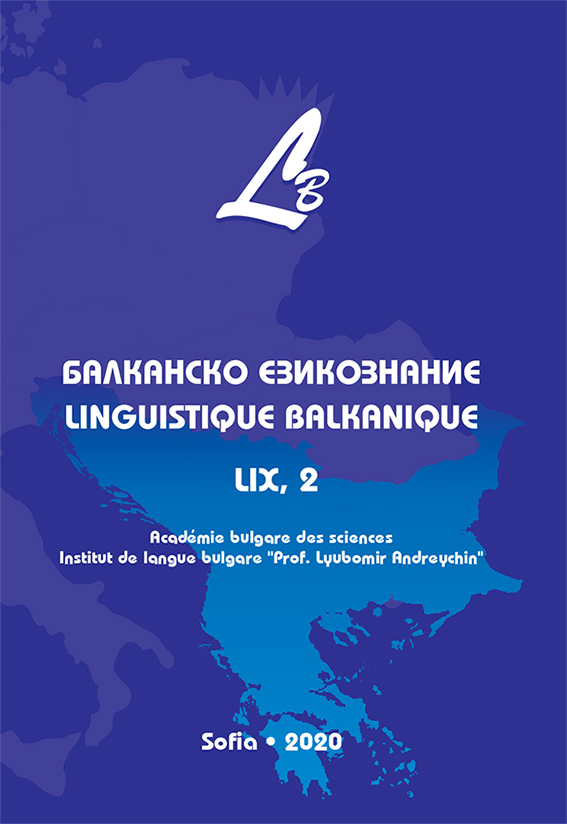
The Moscow school of Balkan linguistics originated in the Institute of Slavic Studies (Russian Academy of Sciences) in the 1960s. It brought together a number of researchers who combined their interest in Balkan synchrony with their deep expertise in diachrony as well as broad competence in linguistics, semiotics, literature, folklore, and ethnology. These researchers’ contributions have been published in periodicals established by the Institute, including “Slavic and Balkan Folklore” (Slavyanskiy i balkanskiy fol’klor), “Slavic and Balkan Linguistics” (Slavyanskoe i balkanskoe jazykoznanie), “Series Balcanica” (Balkanskie chteniya), “Centre of Linguocultural Research “Balcanica”. Proceedings of Round Tables” (Materialy kruglogo stola CLI “Balcanica”), as well as in a number of monographs and collected volumes. Since 2008, the main unit within the Institute organizing the events and publications in the field of Balkan linguistics is the Centre of Linguocultural Research “Balcanica”. The central concept of the school is the so-called “mediate language” (“jazyk-posrednik”), an abstract system of symbols that 1) facilitates the most efficient description of any given Balkan language within the framework of all other Balkan languages and 2) provides a set of cost-effective algorithms to transform sentences (or texts) of a Balkan language into any other Balkan language. In the first part of this study the authors analyze the main publications and conferences within the framework of the Moscow school of Balkan linguistics during the last 60 years, focusing mostly on the problems of grammar typology and highlighting the current trends in the field. We specifically dwell upon contributions in the field of verbal and nominal systems of the Balkan languages, functional words, and lexicon, as well as outline the current trends that define the development of Balkan studies in the first twenty years of the 21st century.
More...
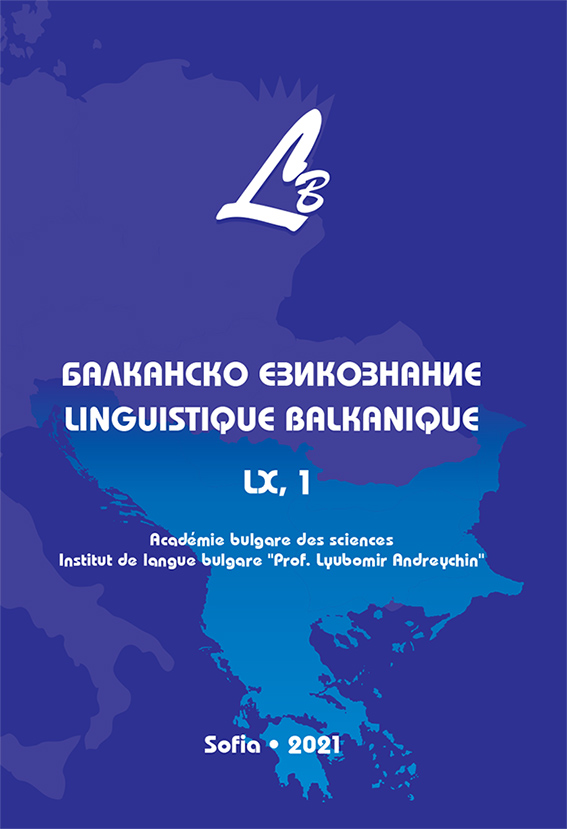

This article analyzes and compares two types of Bulgarian reflexivedative constructions with optative meaning: bi-clausal (Иска ми се да танцувам ‘I wish to dance’) and monoclausal (Танцува ми се ‘I feel like dancing’). It presents the structural and semantic specificity of these constructions as well as the possibilities and constrains for their use. Both structures are distinguished by the presence of a verb in the third person, the reflexive particle се and an obligatory dative clitic expressing an experiencer argument. The bi-clausal constructions are viewed as resulting from optative diathesis: аз искам да ‘I want to’ → иска ми се да ‘I wish to’. The monoclausal constructions are viewed as resulting from a further transformation: Иска ми се да танцувам → Танцува ми се. The semantic specialization of the monoclausal constructions is to express a desire for something based on an internal need (primary or secondary). The dative argument is understood as a ‘feel like/experiencer’ subject of the denoted event.
More...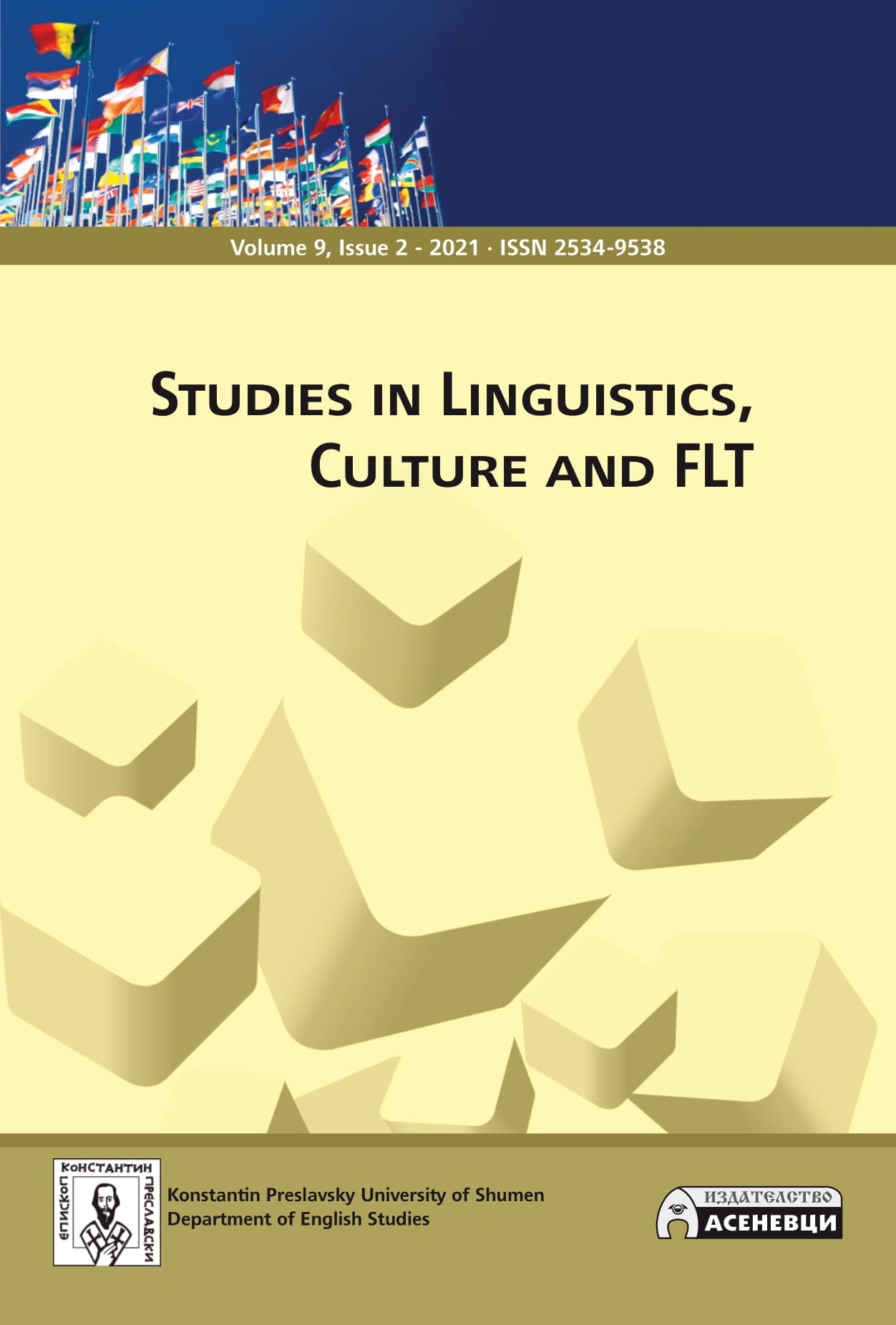
Nonce words or occasionalisms are coined for a particular occasion and usually they are used just once. It is especially difficult when such newly created words have to be translated to another language. This article studies John Harding’s novel Florence & Giles and its Bulgarian translation (by Vladimir Molev). It is a sinister Gothic story told by the 12-year-old Florence living in an isolated New England mansion in 1891. She distorts words by transforming them into other parts of speech, e.g. nouns and adjectives are turned into verbs, nouns into adjectives, adverbs and prepositions into verbs, etc. At first, it could be annoying to the reader, however, once you get used to her narration, it is both fanciful and charming. This research studies the intensely concentrated nonce words in the text and their equivalents in Bulgarian from the point of view of their grammatical, word-formative and semantic characteristics. The contrastive method when applied to the parallel corpus shows some similarities and a lot of differences in the particular characteristics of nonce words due to the specifics of the two languages under discussion.
More...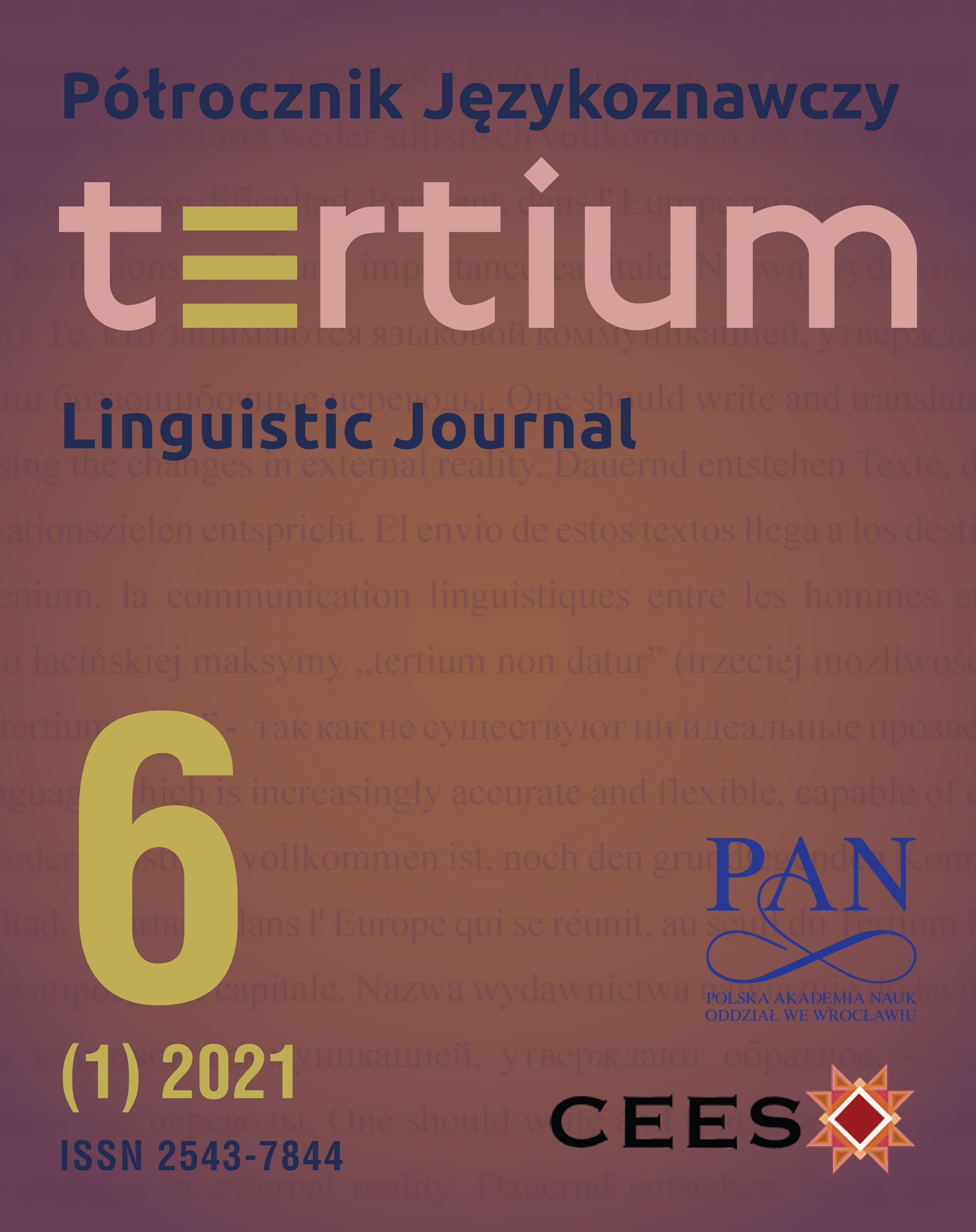
Most linguists consider insults and swear words as interjections carrying an expressivefunction through which the enunciator manifests his/her emotions (Guiraud 1975; Rouayrenc1998). Their function is, therefore, cathartic. The aim of the present study is to provide acontrastive study of insults and swear words. We investigate whether there are specificmorphological or syntactic structures pertaining to insult and swear words, and discuss thecross-cultural similarities and differences in the pragmatic use of this kind of language,focusing on the perspective of politeness. In order to do so, we analyse examples drawn fromHergé’s TinTin and their translation into Greek and English, since this comic is extremelyrich in insults and swear words due to the particularities of the genre of discourse andCaptain Haddock’s expressive character, giving rise to orality and hyperbole. The questionhere is whether the implicit pragmatic and cultural values are the same in all the texts ormaybe there are important differences, derived from the particularities of each of thelanguages of study, which can be traced. It emerged that Greek prefers joined compoundwords and that the chosen utterances reflect all the parameters influencing the original, bethey phonological, semantic, pragmatic or stylistic. In contrast, the English version seems tobe more distant on all levels of linguistic analysis. Accordingly, the (non)preservation of theparameters depends on the peculiarities of, respectively, the Greek, French and Englishlanguages, as well as on the collective images of the recipients. Our conclusions match theconclusions reached in previous research, proving Greek to be rather positive politenessoriented, as opposed to English (see also Romero 2000; Sifianou 2001).
More...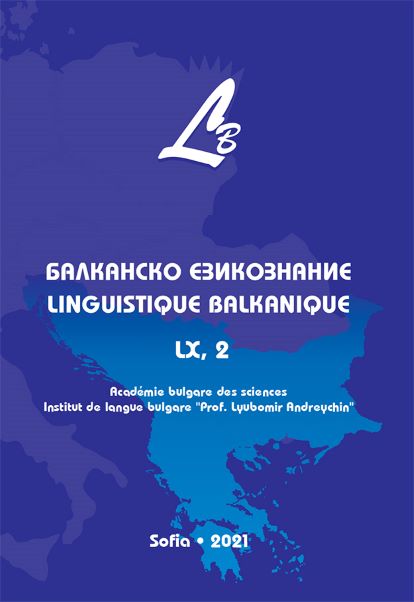
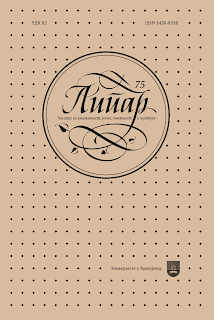
This paper deals with verb forms in the poems The Marriage of Bey Ljubović and Zirka Kajovića from the stylistic and syntactic standpoint. The analysis procedure includes a syntactic indicative, a syntactic relative, qualifier, gnome form, narrative form, and absolute. In addition, referentiality and non-referentiality of verb forms are considered. Bearing in mind that verb forms are most often combined, the stylistic effects of combinations of verb forms are considered. This paper aims to determine the inventory of verb forms and describe their syntactic and stylistic features. The analysis showed that a rich inventory of verb forms could be found in Radovan Bećirović’s poems. Simple Past Tense, Truncated Perfect, imperfect, aorist, and temporally transposed Present Tense denote the past. In both poems, the future is expressed by the future one, and apart from it, in the poem The Marriage of Bey Ljubović, a futuroid is found. The present is realized in a syntactic indicative, and, additionally, it is found as a qualifying, gnomic, and narrative present, of which it is most often used as a narrative. Examples of presentations with modal meanings are not uncommon. In terms of referentiality, present forms in poems denote referential and non-referential actions. The infinitive is found as a complement to modal or phase verbs and is also used in the absolute. The past is realized in the syntactic indicative and the syntactic relative and denotes referential and non-referential actions. The aorist is a high-frequency verb form in the poem The Marriage of Bey Ljubović and is used in most cases as a narrative. The imperfect is realized in syntactic relative and suggests referential and non-referential actions. The Future Simple Tense is found in the syntactic relative, then the absolute, and with modal meanings, i.e., the meaning of intention, commandments, possibilities, etc. While the use of the Future Simple is linked to the heroes’ discourses, the futuroid appears in the narrative discourse. Except in the function of Future Simple, futuroid is found in gnome use. The pre- sent, the aorist, the imperfect, and the truncated perfect are forms whose stylistic features contribute to the topicality, experience, dynamism, and drama of the events being reported.
More...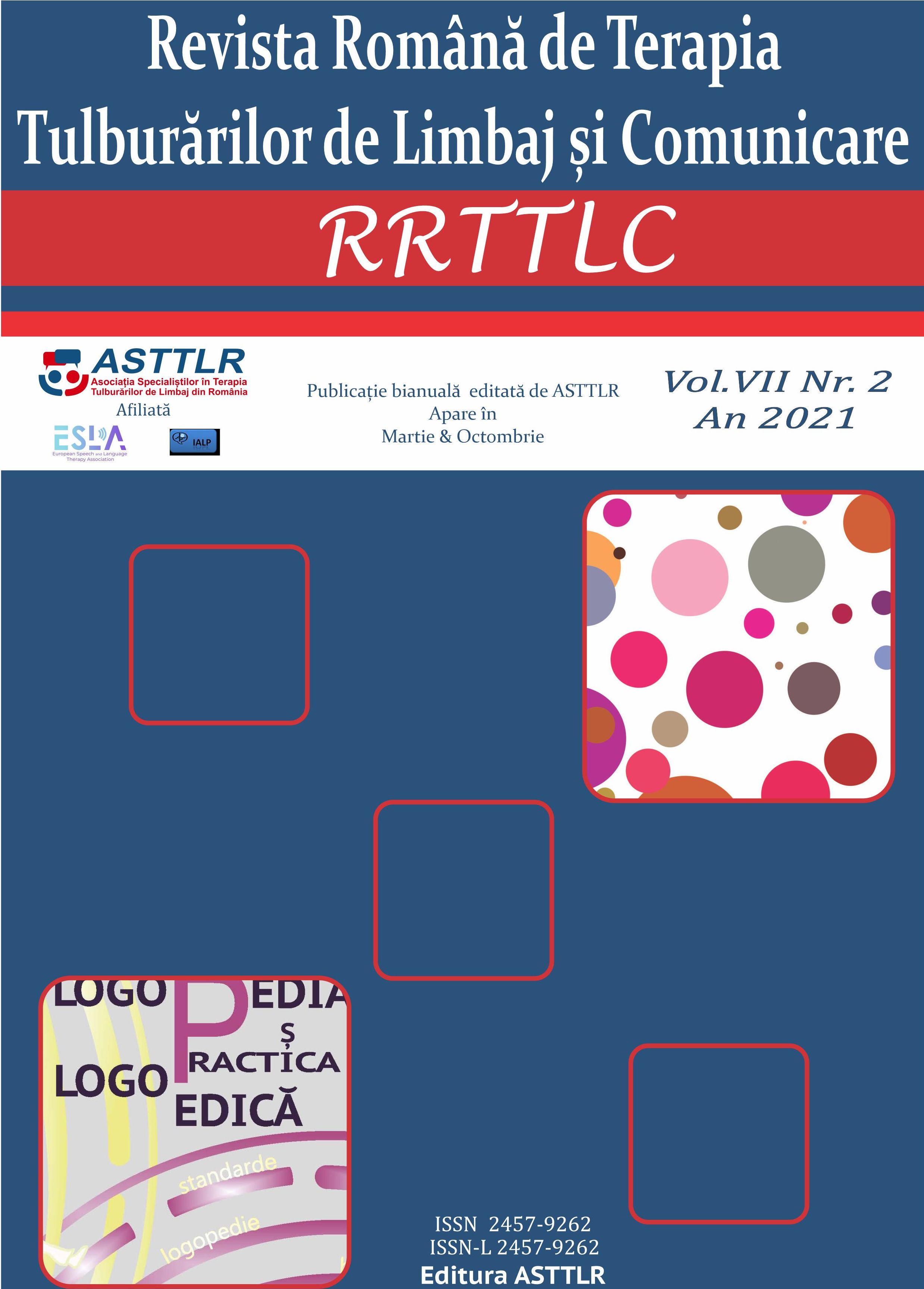
The purpose of this article is to highlight the importance of using three functional measures: Auditory Developmental Scale (0-6 years), Caregiver Intake Interview, and Infant-Directed Speech Checklist in SLT. In the first part of this article, the authors discuss the purpose and advantages of using these instruments in SLT practice. In the last part of this article, the Caregiver Intake Interview and the Infant-Directed Speech Checklist are presented in two languages, English and Romanian.
More...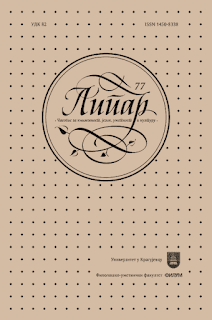
During the process of transcribing the name of the Moscow’s Bolshoi Theater (Большой театр) to Serbian, the Serbian normativistics was tending to gradually turn away from the declension Бољшој теат(а)р, Бољшоја театра (1960) to more or less variant declension Бољшој теат(а)р, Бољшог/Бољшоја театра (1989, 1994, 2010), concluding with the declension Бољшој театар, Бољшог театра (2013) exclusively. On the last transcriptional solution given, the author made remarks that it was discrepant, confusing, impractical, and gram- matically impossible to implement. Thus the author suggested that the Serbian normativistics adopt the following, most practical, solution: as it has come into use that way, Бољшој-театар should be normativized as a semicompound word. In all other and future cases, the Russian toponyms and names beginning with (Не) большой, in the neutre form (Не)большое, should be transcribed as (Не)бољши and (Не)бољше with (joint) genitive case (Не)бољшег, e. g. Russian Большой Город> Serbian Бољши город with genitive case Бољшег города, Russian Небольшой драматический театр > Serbian Небољши драматически театар with genitive case Небољшег драматическог театра, Russian Большое Трифоново > Serbian Бољше Трифоново with genitive case Бољшег Трифоновa. And in the case of Russian toponyms and names beginning with (Не)большая in the feminine gender, their transcription should not be altered anyhow, but stay the way as it is in Serbian normativistics – they should be transcribed as beginning with (Не)бољша(ја) with genitive case (Не)бољше, e. g. Russian Большaя Речка > Serbian Бољша(ја) Речка with genitive case Бољше Речке.
More...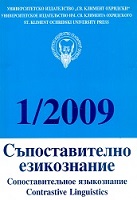
A new approach to the analysis of eighteenth century Bulgarian texts is proposed. They are classified into four types - a strongly classicized, an intermediate, a moderately classicized and a demotic one - which differ in the degree and the character of their classicization on the phonetic, morphological and syntactic level. With all the four written-language styles the vocabulary combines a good deal of the centuries-long tradition (abstract words, names for religious concepts, natural-science and philosophical terms) with innovative lexical items, as it is in present-day Bulgarian, and the spelling is traditional. The Greek moderate Katharevoussa (as a means of making a linguistically modern text look classical-like) is the typological model for the moderately classicized eighteenth century Bulgarian written style, as the Greek Dhimotiki is for the demotic one. Two varieties of the classical written language provide linguistic samples for the eighteenth century Bulgarian scribe: the South Slavic (Serbo-Bulgarian) bezjusov one (without letters for the Old Bulgarian nasal vowels) and the East Slavic Church Slavonic one. The language of Paisij Hilendarski is of the intermediate strongly-to-moderately classicized type with a mixed traditional Serbo-Bulgarian and East Slavic phonetics and orthography and does not contain dialectal-vernacular phonetic features as some specialists in the history of Written Bulgarian claim.
More...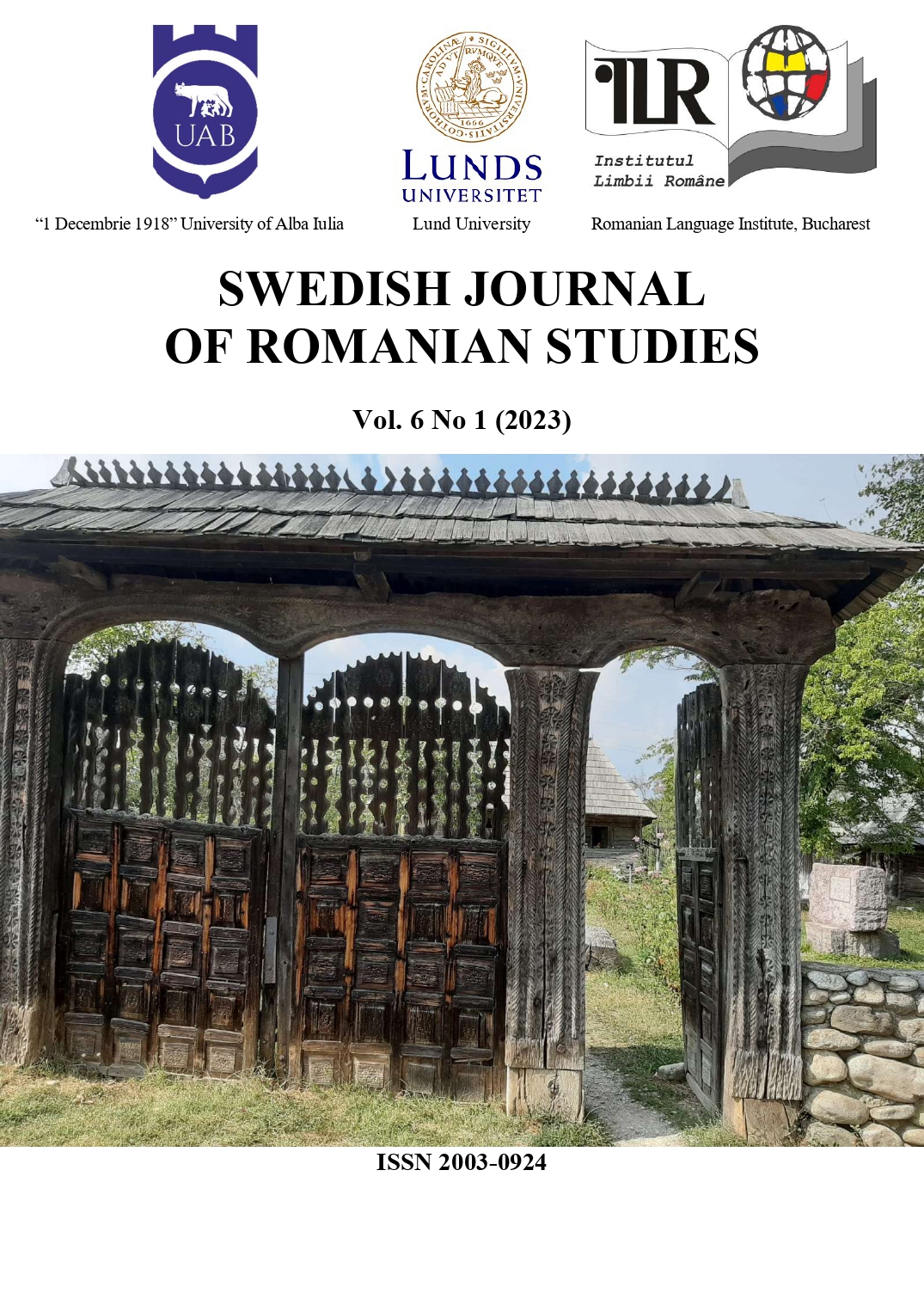
The aim of this study is to present, based on the Rom. ms. 312 from the Academy Library in Bucharest, the teaching material used by a teacher of Slavonic in the second half of the 17th century. Rom. ms. 312 BAR is well-known particularly because it contains the largest dictionary belonging to the group of the first bilingual Romanian dictionaries. The elaboration of these dictionaries should be considered in relation to the political and cultural context of the reign of Matei Basarab, in a period in which Wallachia was influenced by the cultural prestige of Kyiv and of the metropolitan Petru Movilă, who influenced the cultural development of the Romanian Principalities. Matei Basarab wanted to restore the dominance of the Slavonic language and culture, by encouraging the development of schools, among other measures. The necessary linguistic tools were provided by Kyiv, namely the Slavonic-Ruthenian lexicon and Meletius Smotrytsky’s Slavonic grammar (1619). These tools, besides being used as such in schools, provide models for the first Romanian dictionaries and the first Slavonic grammar translated into Romanian. Six Slavonic-Romanian dictionaries have survived, all written in the second half of the 17th century (except for one dating from 1649) in Wallachia, based on the Slavonic-Ruthenian lexicon published by Pamvo Berynda in 1627, which these six works adapted both in terms of the number of entries and the content of the Romanian definitions. Except for the lexicon issued in 1649, the others seem to be modified copies based on a single version. Two manuscripts containing the first Romanian bilingual lexicons also include copies after the same Romanian redaction of the Slavonic grammar. The Rom. ms. 312 comprises the lexicon, part of the grammar, and other lexicographical components, organized as additions to the main word lists. There are several studies on the content of Rom. ms. 312, yet previous research only presents it from a general perspective without much detail on its components. We shall demonstrate that its content is also more complex than that of the other lexicons, indicating and presenting its parts: the first list of words taken from the Slavonic-Ruthenian lexicon; a second list which is independent of it, but which can also be found in three of the other lexicons included in the group; three thematic lists and two lists without a specific theme, plus a dictionary of proper names translated into Slavonic, which has never been studied. Furthermore, we also present opinions on the author of the grammar included in this lexicon. A comparative analysis of the Slavonic grammar of Rom. ms. 312 and the one in Rom. ms. 3473 from the Romanian Academy Library allowed us to advance the hypothesis that these are copies of a previous writing, which was not preserved.
More...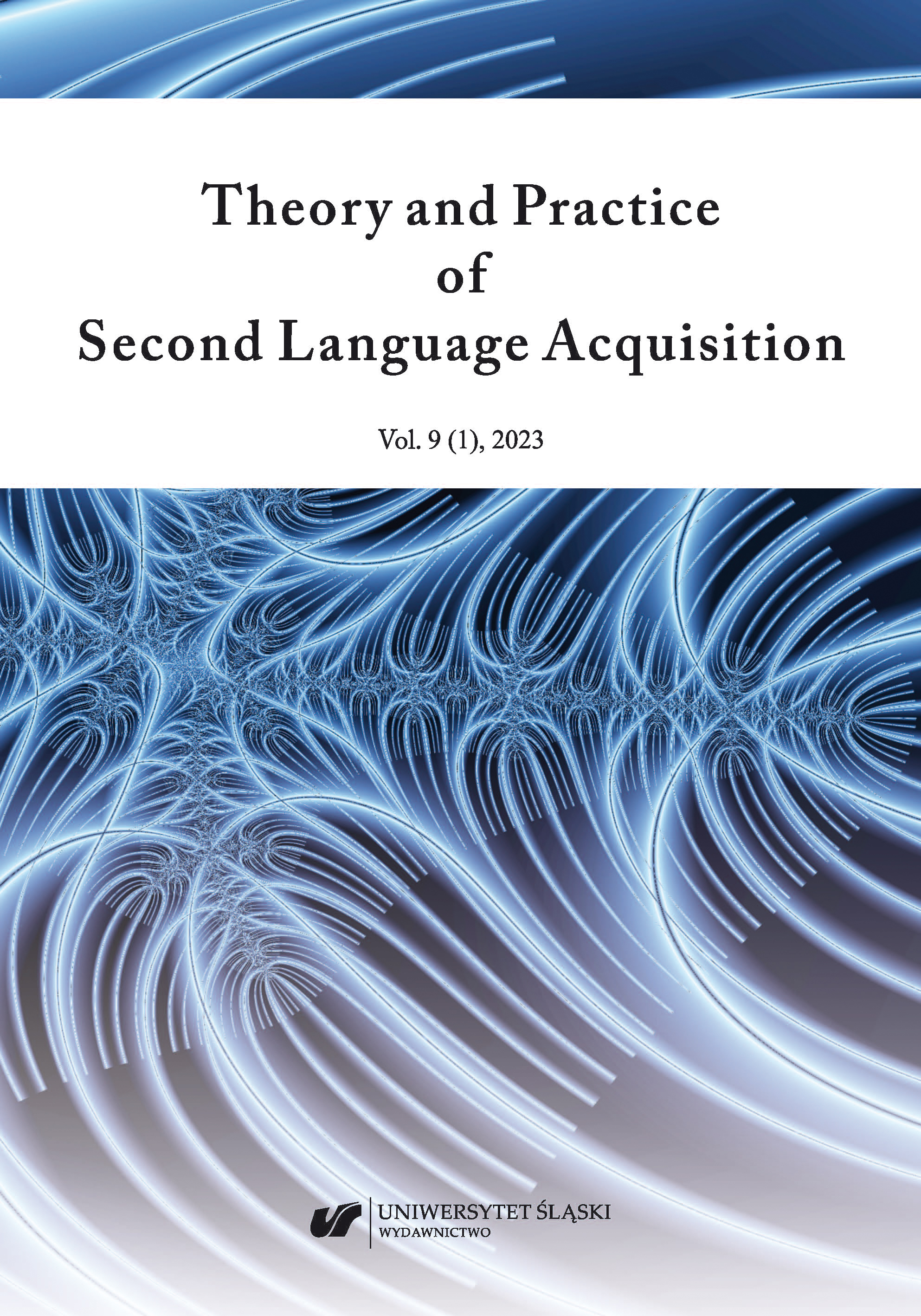
Learner-centered approaches to learning and teaching alongside education for sustainable development (ESD) emphasize the education of engaged and active global citizens (UNESCO, 2017). The development of students’ reflective skills and metacognitive strategies is the center of this study that aims at investigating the learner language of a group of adult learners at an upper-intermediate level. It sets out to investigate to what extent learners are able to notice and correct their errors after reflecting on their spoken production. Moreover, it seeks to examine the students’ perception of their self-reflection and their attitude towards using speaking tasks for grammar learning. Comparative error analysis showed that the participants were able to amend 34.6% of total errors. These were made mainly in noun phrases (30% of total errors in Task 1 and 31% in Task 3) and verb phrases (40% of total errors in both tasks). Although no general conclusions could be drawn, the results seem to suggest that after critical, evidence-based reflection, the participants were able to notice and correct some errors, namely, in determination and the use of the past simple. The results of the survey analysis showed that all participants reported on an improved awareness of the gaps in their interlanguage, and all of them considered speaking tasks beneficial to grammar development. The study indicates that carefully planned, repeated speaking tasks might be helpful for learners’ language processing, consolidation of their grammatical knowledge and the improvement of their reflection skills and metacognitive strategies.
More...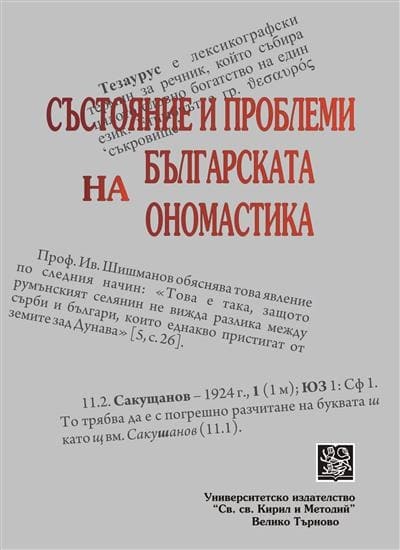

The present article is focused on the similarities existing between some of the characters of the Caucasian Albanian script and some of the graphemes of the so called “runic inscriptions” from the 10th century Bulgarian rock monasteries from Murfatlar and Krepcha. The similarities in question do not only concern the shape of some of the “runic graphemes”. Obvious parallels between the designations of the Caucasian Albanian characters and the “ordinal numerals” from the Proto-Bulgarian calendar are discussed, too. After analyzing these similarities and making a critical discussion on the different attempts at etymologizations of “the ordinal numerals” of the calendar on the ground of the Turkic -r/-l languages, I conclude that the numerals reflect designations of letters from an unknown writing system created for some of the clan languages of the Proto-Bulgarians and partly or entirely based on Caucasian and Semitic written traditions.
More...
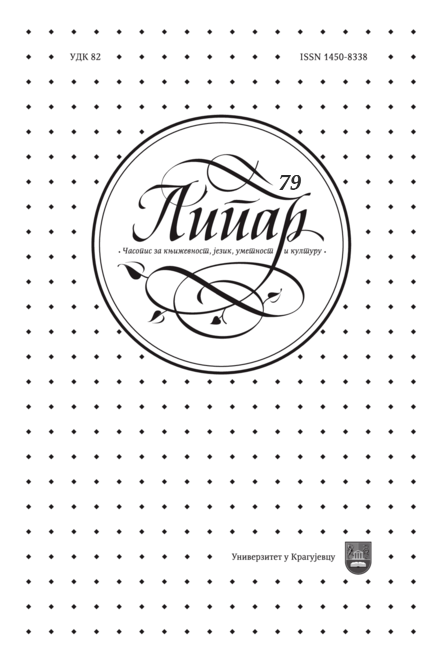
En este trabajo se analiza la presencia y modos de manifestación del paralenguaje en Déjame que te cuente... del escritor y psiquiatra argentino Jorge Bucay. Tres son las razones que nos llevaron a elegir este libro: el título del libro lleva puntos suspensivos que llegan a ser uno de los pilares de la expresividad artística; luego, es una obra llena de diálogos que refleja en papel la estructura típica del discurso oral; y la tercera razón, el autor, además de ser escritor, es un médico psiquiatra y psicoterapeuta, lo que implica una mayor capacidad de matizar la narración con medios no verbales. Bucay utiliza todos los recursos disponibles para diversificar su expresión y hacer reflexionar al lector. Esta intención del narrador se ve ejemplificada a través de muchos elementos paralingüísticos, comunicativamente relevantes. En nuestro análisis partimos de las clasificacones elaboradas por Poyatos (1998, 2002a, 2002б), Antúnez Pérez (2005, 2006) y Panić Cerovski (2017), pero hacemos notar que algunos parámet- ros del análisis deben ser reconsiderados de acuerdo con el canal comunicativo al que pertenecen. Establecida la diferencia entre el tipo visual y el auditivo de los medios de expresividad paralingüística, los resultados del análisis sacan a luz diferentes elementos de tipo visual, entre los cuales destacan los elementos tipográficos y la organización espacial del texto. Los signos de puntuación, interjecciones y vocalizaciones representan las transcripciones de los parámetros auditivos, conque se consideran como elementos paralingüísticos de tipo auditivo. El silencio como ausencia del sonido se manifiesta en la obra tanto al nivel paralingüístico (puntos suspensivos) como al nivel lingüístico (el sustantivo silencio). Se toman en consideración también las descripciones ver- bales que, pese a su realización verbal en la obra, tienen una función primariamente paralingüística gracias a la relación que se establece entre el signo y lo designado.
More...
This paper considers the models of transferring other people’s speech in David Albahari’s novel Leeches from the stylistic point of view. The aim of this paper is recording and illuminating the stylistic effects of different types of transmission of other people’s speech. By using analytical-descriptive methods in the novel, the following are recognized: real indirect speech, introduced free indirect speech, frag- mentary indirect speech, basic (grammaticalized) type of direct speech, semi-indirect speech, indirect expressive speech, and direct non-connector speech. In various contexts they depict the conversations of the novel’s characters.
More...
The paper provides a linguistic analysis of political slogans. The corpus material includes political slogans of this year‘s general elections held on April 3, 2022. The aforementioned syntactic constructions are classified into two categories– slogans with a predicate constituent and slogans without a predicate constituent. Using qualitative methodology, we endeavor to provide a thorough description of excerpted linguistic units in order to determine their stylistic and pragmatic potential. The analysis concludes that the dominant feature of these linguistic expressions are stylistic figures of repetition – alliteration, assonance, and consonance – but in some instances, other marketing strategies have been implemented that contribute to the retention of statements. Nevertheless, we suggest that interviewing native speakers would provide a better insight into the pragmatic nature of the examined material.
More...